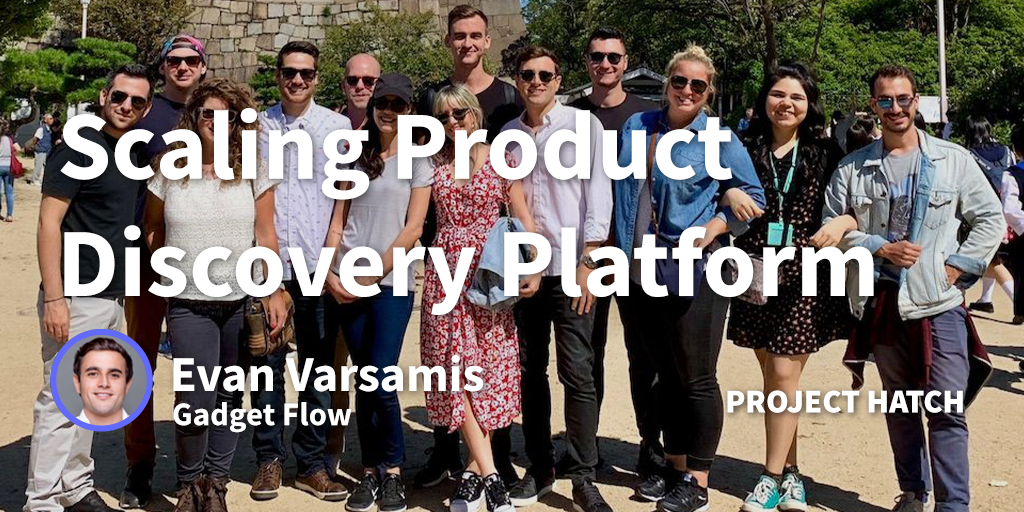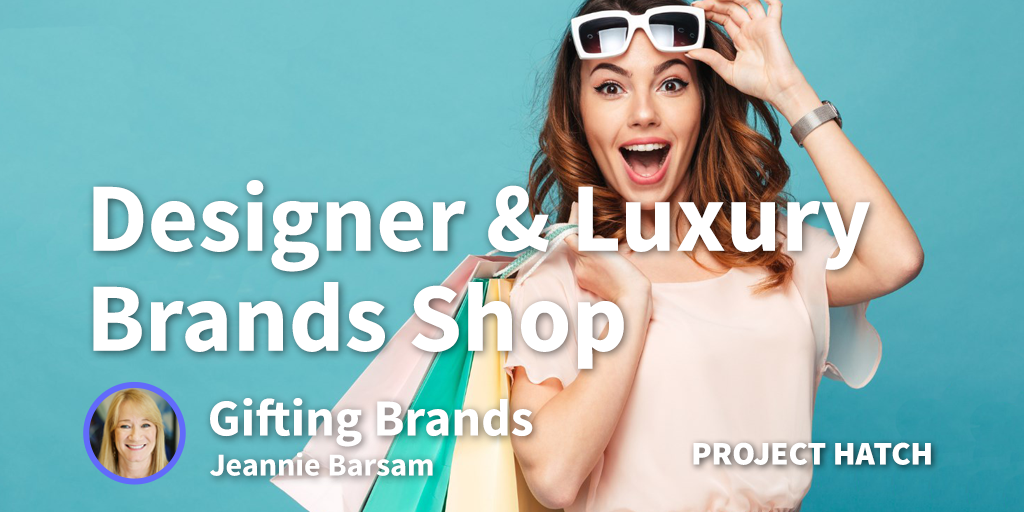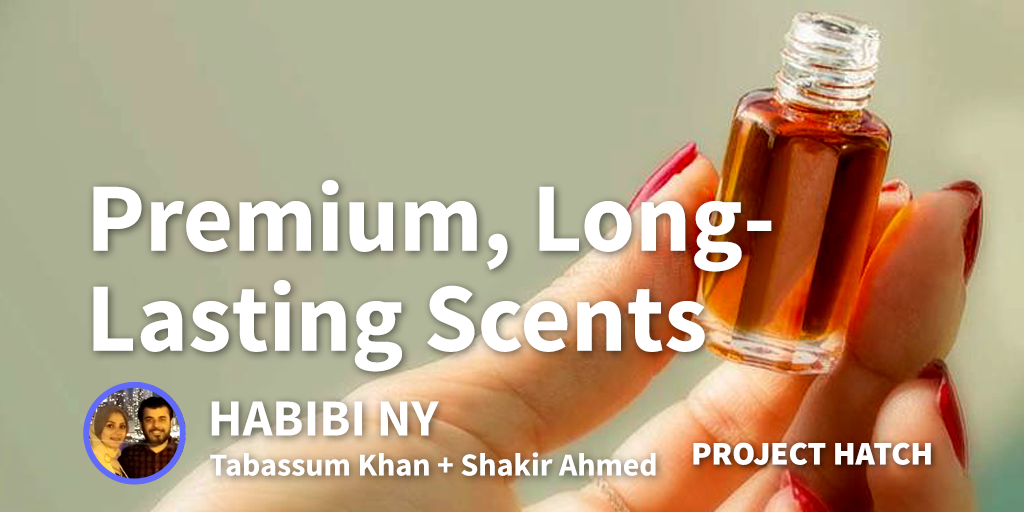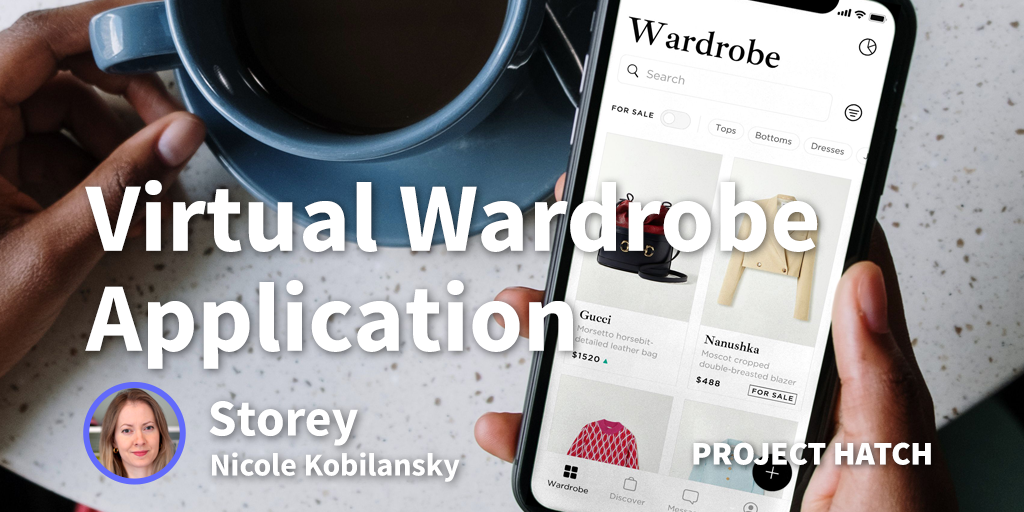Gadget Flow is a product discovery platform. We reach about 28 million consumers on a monthly basis. In a nutshell, we are curating 12 new products every day since 2012. You can purchase these products directly from the sellers or you have the option to save them to your wishlist. The idea is to make everything available from the original vendor.
We link to third party websites, Amazon listings, crowdfunding campaigns, and everything in-between. We've worked with over 7,000 customers since 2012, including some larger brands like HP, DJI, Lenovo, and more than 4,000 crowdfunding campaigns. We offer a series of services for creators from the crowdfunding sites or small to medium business owners; from product promotion and sponsored placements, to unboxing episodes, as well as product validation services with our Crowdinsight product.
We're a team of 28 people headquartered in New York, but our team works remotely from all over the world.
Is it similar Product Hunt, for eCommerce?
For the record, we founded Gadget Flow before Product Hunt.
Product Hunt is for services, apps, SaaS products, partner products, books and everything in-between. Product Hunt launches everything, and it's a bit more community-oriented with the voting system and everything.
The idea of Gadget Flow was to create something that's between Amazon and Engadget. On one hand, through Amazon, you can just literally find anything you want, but it requires a lot of time to find quality and unique products, whether you’re looking gifts products, tech products etc.. On the other hand, you have Engadget or Gizmodo and other tech blogs, that write 2000-3000 word reviews on products. They go into detail but you don’t actually understand what each product does straight away. However, if you wanted to see a thorough review, that was the best place for you to go.
So with Gadget Flow we sit right in the middle, we present 12 new products every single day.
We feature a product with only 100 word description. We make it as descriptive as possible but also allow you to visualize how you can use the product without needing to read thousands of words.
We present each product it with a few high quality photos, a couple of videos, the specifications, the pricing. Then you can either save it to your wishlist or click buy now and get redirected to the seller's website.
How do you promote a website like this? How did you get your name out there?
In the early days, I was actually taking care of our marketing department on my own. As a small company, you wear multiple hats, especially in the beginning. So I was in charge of marketing, and I used a lot of growth hacking strategies and techniques in general. One of the best, during the early days, was Facebook. We partnered with a lot of pages back in the day that were primarily niche pages.
We would ask them to post products from Gadget Flow, and then we were converting their community to our users and subscribers and so on. That has worked for a couple of years. Then Facebook destroyed the organic reach. After that, we focused hard on SEO, as well as content marketing. We also upped our social media game in general, because we were relying a lot on Facebook.
To break it down, it was 90% Facebook during our early days. Then we focused on Twitter, after that Instagram came along so we focused on that. Today it's primarily organic, meaning search - Bing, Google, DuckDuckGo and so on. Then the other half is split between social and content marketing.
At the start, how did you fund it? Because surely there were some costs involved in starting, even though you weren't getting a lot of paid marketing. How did you fund that first year?
We were lucky to be profitable since our third or fourth month. So the actual amount we put down as the three founders initially wasn't that significant. We're talking about a four figure number. It was primarily hosting, development and a few other things. It wasn't something crazy that you need to raise a seed or series A round to do. It was definitely easier back in the day because of the growth hacking strategies I mentioned with Facebook. It would have been way more challenging if you were to start today.
What is your typical client? So when people are coming to you saying, "We want to advertise on your site," are they typically a Kickstarter, Indiegogo type of person? Or are they more of a general eCommerce site, that's just promoting your product?
The majority used to be crowdfunding, because we were one of the first marketing platforms when Kickstarter and Indiegogo skyrocketed between 2012 and 2016. Now our ideal customers are small to medium business owners that have a Shopify store and are selling a high quality product.
In terms of crowdfunding, we're partnered with Indiegogo and we are listed as experts on Kickstarter. We've also partnered with over 40 agencies and third party services as well. We've created an affiliate network for them in order for them to refer customers to us. It's become a big network now that leads to Gadget Flow. It is something that took us a lot of years to create and sustain.
So there's a lot of services that will offer to promote your Kickstarter for you, and they'll do kind of full service ad agencies and things like that, so they'll run YouTube and Facebook Ads. How come you've decided not to offer that full service and focus on your type of promotion?
Before we launched Gadget Flow, we were working on a media agency. I was the founder of that agency alongside the other two partners of Gadget Flow. We had a lot of experience with Facebook Ads, graphic design, web design, marketing, PR and everything in-between. We were running that company for over a year. We shut it down because we realized Gadget Flow's potential and we wanted to focus 100% on it.
When it comes to an agency and a third party service, the crowdfunding market is highly saturated. In 2019, you go live on Kickstarter and on day one you get 200 emails from third party services saying, "Hey, we want to boost your product." (We're definitely one of them, by the way, for the sake of transparency.) But the reality is that 90% of those companies are actually a scam. There's this scam community built around the crowdfunding market that is just trying to take advantage of all the creators and get big piece of their total amount raised.
What we do, from our side, is not to offer a full service to a creator or a campaign. There's so many companies that it just doesn't make sense to compete with these people. So instead, we built a product that they don't have, we're not competing with them and they're actually sending us customers.
With that, it makes it a bit easier for us to convert customers because we have agency "XYZ" recommending our product. It makes it easier for the creator to get actual feedback on a service. Don't get me wrong, there's a few other services out there, shout out to BackerClub, The Crowdfunding Formula, Crowdreach, Jellop, Enventys.. We've been working with them for years.
So what does your team actually look like now? So what's the breakdown, in terms of sales, web development, that kind of thing? Are there any services that you want to look to offer? Is there going to be a shift in that team breakdown at some point?
When we were scaling the business, everyone was doing a lot of different tasks, you know how it is to run a startup. But nowadays, we break it down into separate departments and it has been this way for the past 2-3 years. We broke it down into customer support, sales, operations, our development team, and of course the management team too. It's more streamlined now.
Are you looking to offer any services?
There's so many ideas and so many different ways that we can expand Gadget Flow. On one hand it's a platform but we also have the apps for both Android and iOS with over a million downloads. We test the waters with a lot of new features that come out from third party services. For example, we were one of the first apps back in 2017 on Apple's app store that supported the augmented reality feature through Apple’s ARKit.
If you have an iOS device and you download the app, you can actually experience some of the products that we showcase in augmented reality. It’s not scalable so far but we’re definitely we're looking at 2020 and 2021 to scale that even further and have higher adoption rates. The idea when we're looking at services, is to focus on what we're doing really well. Of course we also experiment with new ideas.
Our marketing plans start at $400 and they can go all the way up to $30,000 for enterprise level options. We offer the Crowdinsight feature which is either for creators or small business owners with a hardware product. They can get feedback from our community about their product and potentially increase their conversion rate and ROAS (return on ad spend).
The third service is something that we've launched recently. We partnered with the Cory group, which is a crowdfunding agency based in Israel. We've also partnered with Jonny Caplan, a very reputable tech reporter and we're doing unboxing videos. We launched that in May, 2019 and it's been going really well, we've had HP as one of our first customers. We've got over five videos that we're working on right now. The idea for this is to be able to release a couple of videos on a monthly basis, and scale that up as we grow.
So then moving onto how you're marketing today, you've managed to get featured in places like Forbes and other big magazines. How did you get into these magazines? And what effect did they have on you being able to network with people and acquire new customers?
It was primarily organic and then a bit of networking, I would say. So attending conferences where we exhibited and The Next Web in New York in 2015, 2016 and 2017. I was also a speaker at the web summit in Lisbon in 2017. It's about getting your name out there and attending conferences or events around your market and making sure to network with people.
As far as the effect, it's really depends. Many startups believe that, "Oh, I'm going to get featured on Product Hunt or Forbes or TechCrunch and this is going to change my life." You definitely see a traffic spike for the first 24 or 48 hours, but that's pretty much it. Then it's just a logo on the footer of your website.
Whether that helps convert a customer or not, I feel like it does. However, the more saturated that market becomes, the less importance it has, because it comes down to how valuable your product is. For the people that are in the marketing space, they understand how the market works - meaning the actual value just gets decreased over time, I would say.
Then more generally, so when you're running the business day to day, what are you using to manage the team? So you manage it entirely remotely. How do you manage that? And what apps assist you with doing that?
Our team is focused around certain KPIs across all departments. We're using monday.com to organize all of the departments as well as our one-on-one calls, the agenda for the next meeting, the items that we have under development and stuff like that.
In reality, it comes down to great team collaboration meaning all departments understanding and knowing what other departments are doing, as well as who to reach out to if we have a specific case or a request.
It comes down to creating an internal knowledge-base that forms your base as a company. As you scale your business, it's smart to run your business like it's even bigger than it is today. So if we take our example - Gadget Flow has 28 people today. In summer 2019, we're running as if it was 50-60 people. That does two things. One, it makes us work harder when it comes to workflow, procedures, policy updates, etc... The second thing is that it preps us for when that time comes. We hire one or two people every quarter depending on the year.
We use Intercom as our customer support tool, live chat, email and everything in between. Then Salesmate for our sales team. Initially we tried Salesforce for a year and a half but didn't like it. We tried other tools in the past, like Podio but didn't like it. Now we're stuck with Salesmate, which is a good thing.
Have you met all of the team? Or are you strictly remote? Have you met every person?
Around 90% of the team. We actually did our first team retreat in Japan in Osaka, in September 2018, and we're going to do another one soon. The idea is to bring everyone together, it boosts your energy, your confidence, your productivity as well. You see these effects for months after the team retreat.
Have you ever had to reject a product from your platform, because it was too outrageous? And what was it?
Every product passes through our compliance team. They check products just before we publish them and also monitor the performance of certain product categories after we publish them.
When we see a spike of negative comments on certain products, we investigate and make sure to adjust the rating. There has been a lot of cases, especially with crowdfunding campaigns where they didn't deliver or it took them three years to deliver. So we started creating notes about particular listings with our findings, and drop their rating down to one star or two stars, depending on the case.
Our approval rate is close to 80% at this point, so we don't actually publish whatever we find or whatever our customer sends us. They have to meet the requirements and it should be a product that we would feature organically anyway.
We have a backlog of products to go live for the next few months and we do feature organic products too. What we offer to our customers with our marketing plans is additional exposure - they get newsletter placements, featured placements and slider placements. But again, we're not featuring or promoting products that we wouldn't feature organically. That’s how it works.
So 20% of products are too dangerous to feature?
Not necessarily. It could be products, for example, such as prototypes. There are prototypes and prototypes out there. There could be one that looks like an alpha version of a product and it's not good enough at that stage to actually feature on Gadget Flow. But that particular customer might come back after a few months and say, "Okay, we created a better prototype and we're now ready to actually crowdfund this." In that case, we of course re-evaluate and approve it. The majority of the products we reject comes down to the quality, not necessarily that it's dangerous.
| Company Name: | Gadget Flow |
|---|---|
| Founder: | Evan Varsamis |






